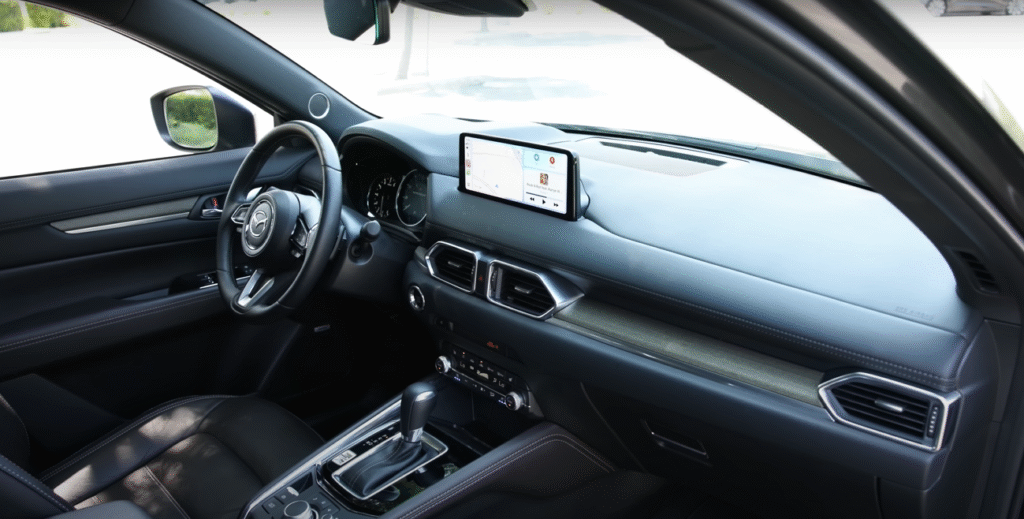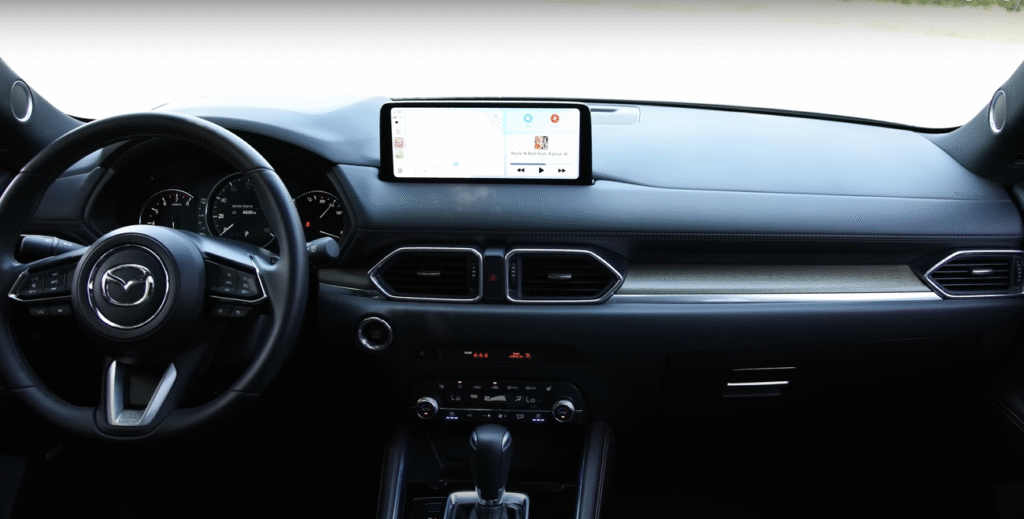The 2025 Mazda CX-5, even in its second generation, remains a popular choice. It offers a stylish design, engaging driving dynamics, and a premium-feeling interior. However, no vehicle is perfect for everyone. While the CX-5 has many strengths, it also carries certain limitations. These might make it less ideal for some buyers, depending on their specific needs and preferences.
As an automotive expert, my goal is to provide a balanced perspective. Understanding potential drawbacks is crucial before you commit to a purchase.
Join me as we explore the Top 5 Reasons to AVOID the 2025 Mazda CX-5. This will help you make a truly informed decision.
1. Limited Interior Space, Especially for Taller Occupants
One of the most significant drawbacks of the 2025 Mazda CX-5 is its interior space, particularly for taller individuals.


- Tight Front Legroom: As noted by a 6’4″ reviewer, the front legroom can feel quite cramped. The driver’s seat may not slide back far enough on its tracks for optimal comfort for very tall drivers.
- Limited Rear Passenger Space: The second row offers average space. However, if a tall person is seated in front, there’s very little legroom left for a tall passenger behind them. This can make long journeys uncomfortable.
- No Thigh Extensions: The front seats lack thigh extensions. This is a common feature in larger vehicles that can greatly improve comfort for taller occupants by providing better leg support.
- Impact on Practicality: If you are tall, or frequently transport tall adults in the rear, the CX-5’s interior dimensions might feel restrictive and less practical compared to some rivals.
2. No Hybrid Powertrain Option
In an era where fuel efficiency and electrification are becoming increasingly important, the 2025 Mazda CX-5 stands out for its lack of a hybrid powertrain.
- Efficiency Gap: Both the naturally aspirated and turbocharged engines, while capable, offer standard gasoline MPG figures. These are notably lower than what a hybrid alternative could provide.
- Future-Proofing: For buyers looking to reduce their carbon footprint, save on fuel costs, or simply embrace newer automotive technology, the absence of a hybrid option might be a deal-breaker.
- Competition: Many competitors in the compact SUV segment now offer compelling hybrid or plug-in hybrid variants, giving them an edge in fuel economy and environmental considerations. You would need to wait for the third-generation CX-5 for a potential hybrid.
3. Infotainment System’s Limited Native Touchscreen Functionality
While the 2025 CX-5 features a modern 10.25-inch infotainment screen, its functionality can be a point of frustration for some users.

- Touchscreen Limitation: The screen is only a touchscreen when using Apple CarPlay or Android Auto. When operating the native Mazda infotainment system, it must be controlled solely by a rotary knob on the center console.
- Learning Curve & Distraction: This unique control method, while designed for safer operation while driving, can have a learning curve. It might feel less intuitive or even distracting for users accustomed to direct touchscreen interaction for all functions.
- User Preference: Many modern drivers prefer the immediacy and familiarity of a full touchscreen interface. The CX-5’s approach might feel dated or cumbersome to them.
4. Firm Suspension (for some) and Minor Performance Quirks
While the CX-5 is praised for its engaging driving dynamics, some aspects of its ride and performance might not appeal to everyone.
- Firm Suspension: The suspension can be “a little bit firm for some.” While this contributes to its sporty handling and planted feel, it might translate to a less plush or absorbent ride over rougher roads, which could be a concern for those prioritizing maximum comfort.
- Turbo Lag: The optional turbocharged engine, while powerful, can be “a little bit laggy off the line.” This means there might be a slight delay in power delivery when accelerating from a standstill, which can be noticeable in stop-and-go traffic.
- “Squishy” Brakes: The brakes are described as “a little bit squishy.” While they work fine, this might imply a less immediate or firm pedal feel compared to what some drivers prefer.
5. Missing Some Common Convenience Features in the Rear
Despite its premium feel, the 2025 CX-5’s second row lacks a few convenience features that are becoming standard or widely available in competitors.
- No Rear Sun Shades: The absence of available sun shades in the second row means passengers might experience discomfort from direct sunlight, especially on long journeys.
- No Dedicated Rear HVAC Controls: While rear seat vents are present on most trims, there are no dedicated HVAC controls for rear passengers. This limits their ability to adjust temperature and airflow independently.
- Only Two Rear Headrests: The CX-5 provides only two winged headrests in the rear. This means the middle passenger lacks a dedicated headrest, which can impact comfort and safety, particularly for adults.
- Impact on Family Use: For families who frequently use the second row for children or adults, these omissions might detract from the overall comfort and convenience of the rear cabin.
Conclusion: A Refined SUV with Specific Trade-offs
The 2025 Mazda CX-5 is undoubtedly a highly refined and engaging compact SUV. It offers a premium experience that often belies its price point. However, it’s crucial to acknowledge its specific trade-offs before making a purchase.
The limited interior space (especially for taller occupants), the absence of a hybrid powertrain, the unique infotainment control method, a firmer ride for some, and the lack of certain rear-seat conveniences are all factors that could influence your satisfaction. If these specific drawbacks align with your priorities, then understanding these reasons to avoid the 2025 Mazda CX-5 is essential for an informed decision.
Ultimately, the CX-5 is a great vehicle, but it’s not perfect for every driver. Your decision should depend on whether its strengths outweigh these specific compromises for your
About the Author: Kelley Blue Book Your Most Trusted Car Guide for EVERYTHING
- Instagraminstagram.com/kbb_com/?hl=en
- Facebookfacebook.com/kbb?fref=ts
- Source: 2025 Mazda CX-5



